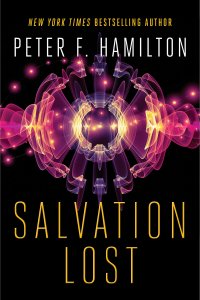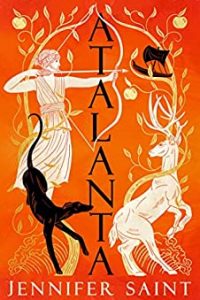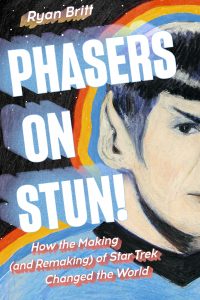Gwenda Bond’s Top Ten for 2010
Best lists are strange and unwieldy beasts, especially for those of us with wide-ranging tastes and a healthy consumption rate for new books. And there’s something about the very concept of naming the “best” of the year that—like awards—brings out an instinctive need for fisticuffs and debate and “I can’t believe X didn’t make it.” Still, over the years I’ve found invaluable recommendations in just such places; the more idiosyncratic and personal the list, the better. So that’s why I agreed to give my take on the best books I read in 2010, with the caveat that there are still a great many books published last year I haven’t gotten around to yet. That my picks skew toward young adult science fiction and fantasy is no surprise, since my reading does too.
On the YA side of things, this was also a strong year for realistic fiction, and I encourage those interested to seek out some of those books, too. Andrew Auseon’s Freak Magnet, one of my favorite books of the year, wasn’t eligible for this list because it’s not SFF. But it feels fair to mention here anyway, since the male protagonist is a dyed-in-the-Superman-costume nerd and I bet many genre readers would take to it immediately. Another entry in the associational, of-interest-to-genre-readers category I can’t pass up mentioning are the first two novels of Y.S. Lee’s The Agency series—A Spy in the House and The Body at the Tower—which follow Mary Quinn, an orphan saved from the gallows, as she becomes a full-fledged operative for a clandestine women’s detective agency in Victorian-era London.
With no further ado, ten more books from 2010 you really shouldn’t miss.
1. White Cat by Holly Black (Simon & Schuster/McElderry Books). In this daring beginning to a new series, Black develops a fascinating story of crime and con, twists and double-crosses. The world of the novel is much like our own, except that magic is real and wielded by only a small percentage of people known as curse workers. Cassel Sharpe may be hiding out at boarding school pretending to be normal (read: only indulging in some light bookmaking), but when he wakes up on the roof obsessing over the memory of a murder the assumption is that he’s been worked, and he’s quickly sucked back into the curse-worker family drama he’d rather avoid. A significant departure from Black’s previous faerie books for teens, this novel stands out in a YA landscape dominated by dystopias and paranormal romances.
2. Ship Breaker by Paolo Bacigalupi (Little, Brown). Teenage Nailer Lopez dreams of life aboard the clipper ships in the distance, but his reality is smaller. It’s limited to the dangerously close quarters of oil tankers, where he scavenges copper wire, and to Bright Sands Beach, where he lives with an abusive, drug-addict father. When a ship washes up on the beach with a rich girl inside, Nailer’s horizons suddenly expand far wider than he could have ever imagined. At breakneck pace, Bacigalupi conjures a memorable cast and the sharp-edged dystopia that surrounds them. But the story’s unrelenting focus on Nailer and the moral war that rages within him is what I found most riveting. It’s also worth noting that, unlike much of Bacigalupi’s work for adults, in this newly-minted Printz Award winner the darkness doesn’t crowd out hope.
3. Bleeding Violet by Dia Reeves (Simon Pulse). Manic depressive Hanna Järvinen arrives in Portero, Texas, to look up Rosalee, the mother she’s never met… with her dead father’s ghost in tow. Hanna is an intriguing oddity of a character: she exhibits a mood ring of mercurial emotions, suffers possible hallucinations, is often violent, and wears only shades of purple (her father’s favorite color). Portero is just as intriguing an oddity, a town filled with doors to other dimensions, the monsters that come through them, and traumatized and/or traumatizing inhabitants. Hanna shows Portero that every “transy,” aka non-local, isn’t cut from the same cloth over the course of an impossible-to-predict narrative packed with gore. An urban fantasy in the classic sense of the term, I defy anyone to name a more satisfyingly strange debut from last year.
4. Clockwork Angel by Cassandra Clare (Simon & Schuster/McElderry Books). The opening installment of The Infernal Devices trilogy finds Clare delivering a Victorian-era view of the wildly-popular Shadowhunter universe. Clare handles the shift from very contemporary New York to very historical London effortlessly, with her trademark crackling storytelling. Heroine Tessa Gray is as plucky and smart as they come, a good thing because the mysterious Magister of the Pandemonium Club wants her for his own and won’t take no for an answer. While there’s enough romantic tension to spark a gaslight flame between Tessa and Shadowhunters Will and Jem, the book’s greatest fun is in watching Tessa capably deal with the peril and adventure that comes her way.
5. Fever Crumb by Philip Reeve (Scholastic). From its evocative opening lines to the last page, Reeve’s new book casts a dystopian spell unlike any other on the shelves. The first in a series of prequels to his Hungry City Chronicles, this beautifully written novel creates a world slyly positioned between ours and the future of moving, warring cities. The heart of this novel is its coolly rational heroine Fever Crumb. Fever has been raised by the Order of Engineers, unaffected by an outside world where Skinners have exterminated a race known as the Scriven. When Fever raises suspicion of being Scriven herself, she flees for her life, even while struggling with emotions the engineers never taught her how to deal with. Reeve has stuffed this gripping novel full of potent imagery and conflict, imbuing a heavy gravity to the history of the Scriven and the horrors that threaten to come for Fever.
6. Ninth Ward by Jewell Parker Rhodes (Little, Brown). Twelve-year-old Lanesha has always been able to see ghosts, a gift from the caul covering her when she was born. Among the ghosts of New Orleans that Lanesha sees is that of her mother, who died shortly after childbirth and inhabits the upstairs bedroom at her caretaker Mama Ya-Ya’s house. While Lanesha wonders about the better-off Uptown relatives who’ve abandoned her, she has deep love for her Ninth Ward life and for Mama Ya-Ya, who teaches her how to interpret signs and visions. As Hurricane Katrina arrives, Lanesha needs all her strength—and the help of the spirits—to make it through the storm. Parker Rhodes leaves no doubt that Lanesha’s ghosts are real and, in so doing, weaves a haunting survival story.
7. Mockingjay by Suzanne Collins. The conclusion to The Hunger Games trilogy finds Katniss Everdeen holed up in the headquarters of District 13, an ambivalent symbol being manipulated by rebel forces seeking to overthrow the Capitol. Collins painstakingly reveals layer after layer of the deep trauma Katniss experiences on a daily basis as a result of the previous events in the series. This is a rougher, more brutal novel than those that came before. People we care about are separated from those they love, by distance or by philosophy, and Collins resists making the rebels into heroes. Even if I wasn’t wholly satisfied by the ending, this provocative novel still yielded many of my favorite book conversations of the year both online and off, and proves a worthy finish to a deservedly popular series.
8. What I Didn’t See and Other Stories by Karen Joy Fowler (Small Beer Press). A new short story collection by Fowler is always a cause for celebration, and this one deserves all the fireworks and champagne in the place. Her first collection since 1997’s Black Glass includes twelve stories, published in outlets from Asimov’s to Lady Churchill’s Rosebud Wristlet, that show off Fowler’s sly gift for mixing the real and the fantastic. The volume’s new story, “Booth’s Ghost,” describes the career of Edwin Booth, the famed actor brother of Lincoln assassin John Wilkes Booth, and offers a peek at the ghost haunting him. Among the other stories are Nebula and World Fantasy Award winners “Always,” “The Pelican Bar,” and “What I Didn’t See,” and, truly, every story shines like a rare gem.
9. The Iron Duke by Meljean Brook (Berkley). This dazzling addition to the steampunk milieu runs the risk of being missed by many genre readers for two reasons: 1) it’s romance and 2) the cover features a man’s bare chest and torso surrounded by a porthole. Ignore those things and pick it up anyway. Detective Inspector Mina Wentworth, the novel’s fierce, sharp heroine, is summoned to the house of national hero Rhys Trahaearn, known as “the Iron Duke,” when a frozen dead body turns up on his doorstep. What follows is a rollicking (and admittedly, er, steamy) adventure featuring krakens, airships and derring-do that also grapples with serious issues of race, choice, and truth. The Iron Seas series proves home to some of the most intricate, enjoyably complex world-building I’ve seen in ages. Sign me up for the next installment in this series.
10. Blackout and All Clear (Ballantine Spectra) by Connie Willis. This pair of novels (released that way due to length, presumably) follows Willis’ historians—some of whom have appeared in her previous novels—from future Oxford to World War II England during the blackout, where they may (or may not) be stuck. As Willis masterfully switches between characters and storylines, we witness the war on the battlefields everyday people inhabited: at department stores, in tube stations, down the pub. The blend of nail-biting tension, humor, wonderful characterization, and energetic writing offer everything I require to commit to a thousand-plus pages of story, and more. This is a beautiful story about the uncertainties in life, and the hope and bravery that they can summon. Willis has written a classic.
















Pingback:Tweets that mention Locus Online Reviews » Gwenda Bond’s Top Ten for 2010 -- Topsy.com
Good list, but it misses so many of the top reads from last year. Did you read Ian McDonald’s Dervish House, for example? It’s his best work and should be in everyone’s Top Five! Maybe this list should have been a young adult top ten and then the adult books on this list like the well-deserved Connie Willis titles could be moved over to the adult book top ten.